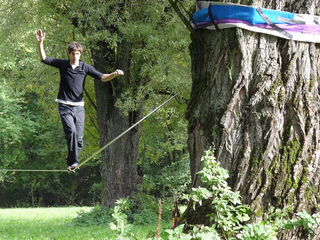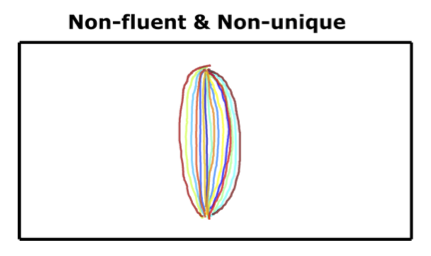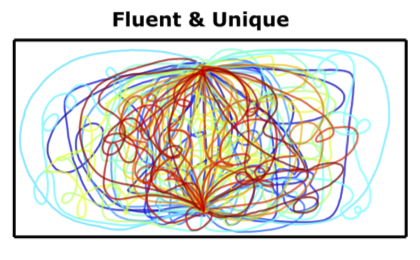Dopamine
What Prompts Us to Come Up With Varied Creative Options?
Dopamine helps us walk the flexibility-fluency tightrope.
Posted April 7, 2019

Imagine that you're trying to think of alternative ways to creatively address a thorny problem. What's your best approach?
Should you place your bets on idea quantity: simply spouting and pouring forth as many ideas as you can, hoping that in the fast flood of your ideas, among the many rather mundane ideas and a few silly ones, there may be one or two insightful gems that will illuminate your way forward? Or should you, from the outset, more closely channel and focus your idea generation efforts, placing your bets on idea quality: telling yourself that it's not just any ideas that you're looking for, but that you're looking to find creative ideas, ideas that are novel, inventive, ingenious, innovative...?
The proposed answers to this question—should you place greater emphasis on the quantity versus quality of ideas generated—have varied across time and labs, in part because idea quantity and quality are clearly associated with one another. For example, there is often a positive correlation between the number of ideas that people generate and both the originality of their ideas and the variety (or flexibility) of their ideas. And it is often the case that later-generated ideas are more creative than earlier ones.
A different approach
A team of eight researchers in the Departments of Experimental Psychology and Clinical Neurosciences at the University of Oxford recently tackled the issue of the fluency (quantity) versus uniqueness (quality) of responses from a very different approach. They set their sights on the question of what might be the biological basis of varied responses, choosing to focus particularly on the neurochemical dopamine. Dopamine (especially the dopaminergic nigrostriatal network) has long been implicated in creativity and cognitive flexibility, but direct evidence for how dopamine influences fluency and flexibility has so far been lacking.
Aiming to ask the question in a way that was minimally influenced by differences in individuals' background knowledge or learning, the Oxford research team adopted a markedly simple visual-spatial task. Participants were shown a 23" touchscreen computer monitor. On the screen were two small red circles, one directly above the other, with the two circles vertically separated by about 8 inches. Participants were told to "Draw as many different paths as you can from the bottom red circle to the top red circle in four minutes.’’
These direct and simple task instructions allowed for fine-grained quantitative assessments of how many paths the participants drew (a measure of quantity or fluency) and how varied they chose to make each of their paths (a measure of quality, originality, or uniqueness).
Equally important, the simple task also allowed testing with participants who have known deficits in dopaminergic function—that is, individuals with Parkinson's Disease. The researchers could test patients both when they were on medications to supplement their dopaminergic function (referred to as being in an "on" state) and when temporarily off those medications following an overnight abstention from their medication (referred to as being in an "off" state). The researchers could then assess how participants performed the task depending on the level of dopamine present.
To further probe the effects of dopamine on the fluency of responses versus the variation (uniqueness) of responses, the researchers also tested a group of older adults, both when the participants were only given a placebo pill (control condition), and when they were administered a drug that is known to enhance D2 dopaminergic function (cabergoline, experimental condition). Like the individuals with Parkinson's Disease, the researchers could then assess how participants performed the task depending on the level of dopamine present.
Examples of participants' responses to the drawing task
Example 1: Non-fluent & Non-unique

In the image above, there are relatively few paths from the bottom red dot to the top red dot, and the paths mostly look the same. All of the drawn paths are slightly curved outward, either to the right or to the left, but otherwise essentially follow the same trajectory.
Example 2: Fluent & Unique

In Example 2, there are a large number of paths from the bottom red dot to the top red dot, and the drawn paths take many different trajectories, sometimes looping and swirling this way or that way, with some taking quite varied, curved paths, and others more direct or smooth-cornered paths.
So, what did they find?
Across each of three studies, with different age and participant groups, the findings were the same: Increased availability of dopamine increased the fluency (quantity) of responding (that is, the number of lines drawn) compared to the control conditions. This was observed both for individuals with Parkinson's disease tested when "on" their dopamine-promoting medication (compared to when they were off their medication), and in older adults tested after being administered cabergoline (compared to being given placebo).
But this was not the only finding. Although dopamine, overall, decreased the uniqueness of the responses, for any given number of responses, the uniqueness of responding was also higher at that same level of fluency. So, dopamine strongly bolstered the quantity of responding and also the uniqueness of responding. Stated differently, dopamine shifted the trade-off line between fluency and uniqueness, so that participants were more unique for a given level of fluency.
The researchers also carefully considered possible confounding factors and designed additional experiments to examine them. For example, could it be that dopamine influenced not the ability to simply think of (generate) different options, but rather the ability to plan them, or the ability to actually make the movements needed?
The researchers were able to show that the effects of dopamine really were on the process of generating different options rather than following through on a planned action or making the movement. For example, when the iPad display showed many different endpoints, rather than only one, and the participant only had to choose one of the endpoints, then there was little influence of dopamine status on performance. Other findings showed that the differences were not due to the contribution of motor tremors, and also not due to differences in drawing speed (which can influence the movements of individuals with Parkinson's disease).
The results of this study nicely converge with those of another recent study, from a research team in Israel, that compared the creative performance of 27 individuals with Parkinson's Disease, when "on" their dopaminergic therapy with the creative performance of 27 control participants, matched on age and years of education. In agreement with the Oxford team's drawing-task findings, the Parkinson's Disease group outperformed the control group in both the fluency (number) and the quality of their creative responses on a visual task that required interpreting the meanings of lines. This bolstering of creative visual responses was significantly greater in a subset of the participants with Parkinson's Disease who were receiving a higher daily dose of dopaminergic-supplement (higher L-dopa equivalent daily dose) compared with a lower dose.
What does this all mean?
The line-drawing study shows that the neurotransmitter dopamine is an important modulator of how we flexibly self-generate or autonomously produce varied options for our behavior. The research provides direct evidence—based on convergent and analytically careful experimental methods with both patient groups and healthy controls—for the important role of dopamine in how we imaginatively and flexibly generate new opportunities for action.
The exact mechanisms by which higher levels of dopamine might lead to increased creativity remain to be tested. One possible mechanism relates to how the availability of the neurotransmitter dopamine (especially in the striatal brain system affected in Parkinson's disease) boosts our tendencies to seek out novelty. Novelty-seeking is an important contributor to creativity and creative flexibility. Novelty-seeking is also an important aspect of enduring personality traits related to creativity, such as openness to experience. Increased dopamine is also known to be associated with good feelings or positive affect, such as how we may feel when we are unexpectedly or unpredictably given a small gift.
To be more creative, should we all, then, be looking to find ways of increasing dopamine, perhaps through engaging in these or other "happiness-boosting" activities?
The answer to this is likely neither a simple "yes" nor a simple "no," but rather—as for many questions about behavior and the brain—"it depends."
A certain level of flexibility is good and often desirable. But too much flexibility can lead us to be distractible, taking away our ability to concentrate or persist in our goals. Whether bolstering our flexibility will also boost our creativity depends on our starting or baseline level of flexibility. It's all a delicate balancing act, a tightrope between being aptly flexible and being appropriately persistent or stable.
References
Ang, Y.-S., Manohar, S., Plant, O., Kienast, A., Le Heron, C., Muhammed, K., Hu, M., & Husain, M. (2018). Dopamine modulates option generation for behavior. Current Biology, 28, 1561–1569.
Boot, N., Baas, M., van Gaal, S., Cools, R., & De Dreu, C.K.W. (2017). Creative cognition and dopaminergic modulation of fronto-striatal networks: Integrative review and research agenda. Neuroscience & Biobehavioral Reviews, 78, 13–23.
Faust-Socher, A., Kenett, Y. N., Cohen, O. S., Hassin-Baer, S., & Inzelberg, R. (2014). Enhanced creative thinking under dopaminergic therapy in Parkinson Disease. Annals of Neurology, 75, 935–942.




